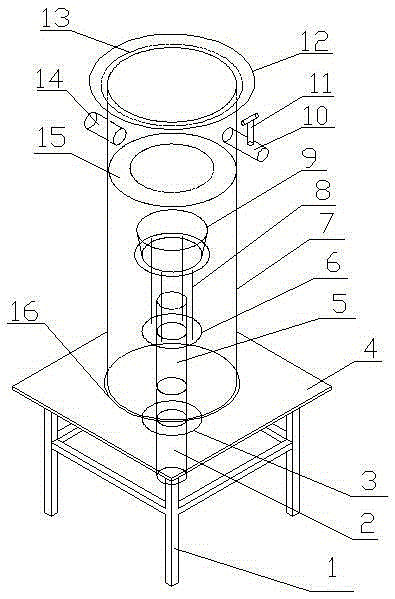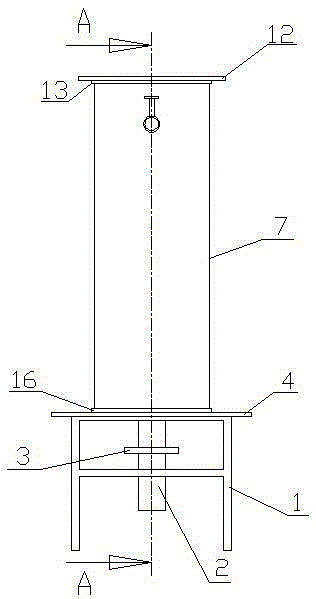A rice vacuum infiltration genetic transformation device
A technology of vacuum infiltration and genetic transformation, applied in the field of rice vacuum infiltration genetic transformation device, can solve the problems of reduced transformation efficiency, broken side branches, low transformation efficiency, etc., and achieves the effects of improving work efficiency, enhancing infectivity and reasonable structure
- Summary
- Abstract
- Description
- Claims
- Application Information
AI Technical Summary
Problems solved by technology
Method used
Image
Examples
Embodiment Construction
[0040] see figure 1 — Figure 13 , a rice vacuum infiltration genetic transformation device according to the present invention is provided with a support table 1, a bottom plate 4, a magnet ring I3, a magnet ring II6, a lower cylinder 2, an upper cylinder 5, a vacuum infiltration genetic transformation chamber 7, a support 8, an infiltration Liquid holding container 9, sealing ring I13, sealing ring II16 parts, the specific structure is:
[0041] A. The structure of the vacuum infiltration genetic transformation chamber 7: the vacuum infiltration genetic transformation chamber 7 is a hollow cylinder, and the top and bottom ends of the vacuum infiltration genetic transformation chamber 7 are open. Covered with a cover plate 12, the top ports of the vacuum infiltration genetic transformation chamber 7 are all in contact with the lower surface of the cover plate 12, and the inner wall of the upper part of the vacuum infiltration genetic transformation chamber 7 is fixedly conne...
PUM
 Login to View More
Login to View More Abstract
Description
Claims
Application Information
 Login to View More
Login to View More - R&D
- Intellectual Property
- Life Sciences
- Materials
- Tech Scout
- Unparalleled Data Quality
- Higher Quality Content
- 60% Fewer Hallucinations
Browse by: Latest US Patents, China's latest patents, Technical Efficacy Thesaurus, Application Domain, Technology Topic, Popular Technical Reports.
© 2025 PatSnap. All rights reserved.Legal|Privacy policy|Modern Slavery Act Transparency Statement|Sitemap|About US| Contact US: help@patsnap.com



